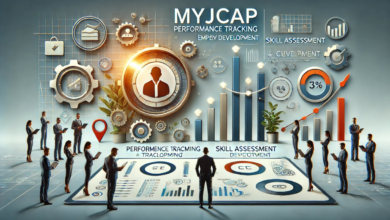Lending: Empowering Financial Growth and Opportunities

Introduction to Lending
Lending, a cornerstone of financial systems, involves providing funds or assets to individuals or businesses with an agreement of repayment, often with interest. This practice dates back thousands of years, evolving alongside human civilization. From informal arrangements in ancient marketplaces to today’s sophisticated banking systems, lending has continuously shaped economic landscapes.
At its core, lending bridges the gap between those with surplus resources and those needing financial support. It is crucial in fostering economic growth by enabling investments, fueling entrepreneurship, and facilitating consumer spending. Lending takes various forms, each tailored to meet specific needs, from personal loans to business financing, mortgage lending, and peer-to-peer platforms.
Key Types of Lending
Personal Lending
Personal lending encompasses financial products designed for individual needs. Personal loans are among the most common, offering fixed repayment terms and interest rates. These loans are ideal for consolidating debt, funding significant purchases, or covering emergency expenses.
Credit cards, another form of personal lending, provide a revolving line of credit, offering flexibility and convenience. However, they often come with higher interest rates, making responsible use crucial. Payday loans, although accessible, are controversial due to exorbitant fees and potential debt cycles.
Business Lending
Business lending empowers entrepreneurs and companies to achieve their objectives. Term loans, for instance, provide a lump sum for investments, while equipment financing facilitates the purchase of machinery. Working capital loans bridge cash flow gaps, ensuring operational continuity.
Small and medium-sized enterprises (SMEs) often rely on business loans to scale operations, innovate, and compete in their markets. Access to tailored financial products fosters entrepreneurial growth and creates employment opportunities.
Mortgage Lending
Mortgage lending enables individuals to achieve homeownership. Fixed-rate mortgages offer predictable payments over a term, while adjustable-rate mortgages fluctuate with market conditions, potentially lowering initial costs. However, borrowers must weigh the risks of rate increases over time.
The real estate market heavily depends on mortgage lending. Homebuyers and investors benefit from tailored loan options, but understanding terms and conditions is essential to avoid financial strain.
Peer-to-Peer (P2P) Lending
Peer-to-peer lending revolutionizes the borrowing landscape by connecting individuals directly through online platforms. Borrowers gain access to funds without traditional intermediaries, while investors diversify portfolios by funding loans.
This innovative approach offers competitive rates and streamlined processes but has inherent risks, such as borrower defaults. Transparency and robust risk assessments are pivotal for P2P lending’s sustainability.
Factors Influencing Lending Decisions
Lenders assess several factors before approving loans. A borrower’s credit score, reflecting their repayment history and financial behavior, is a critical determinant. Higher scores often result in better loan terms and lower interest rates.
The debt-to-income ratio (DTI) evaluates an applicant’s financial health by comparing debt obligations to income. Lenders favor low DTIs because they indicate manageable financial commitments. Stable employment and consistent income further enhance loan eligibility.
Collateral requirements vary by loan type. Secured loans, like mortgages, require assets as security, while unsecured loans rely solely on creditworthiness. Additionally, macroeconomic factors, such as market interest rates and economic conditions, influence lending practices.
The Digital Revolution in Lending
Technology has transformed the lending sector, making it more accessible and efficient. Fintech platforms offer digital lending solutions, enabling borrowers to apply for loans online with minimal paperwork. This convenience accelerates approval processes, often providing funds within hours.
Artificial intelligence (AI) and machine learning optimize risk assessments by analyzing vast datasets and reducing defaults. These technologies also enhance customer experiences through personalized loan products. However, digital lending faces challenges, including cybersecurity threats and regulatory compliance.
The rise of blockchain technology further enhances transparency and security in lending transactions. Smart contracts automate processes, ensuring trust and efficiency between parties.
Challenges and Risks in Lending
While lending drives economic progress, it is not without challenges. Borrowers risk over-indebtedness when loans exceed their repayment capacity, leading to financial strain. Hidden fees and unclear terms exacerbate these issues, underscoring the importance of informed decision-making.
Lenders face risks such as defaults and fraudulent applications. Comprehensive credit checks and robust verification processes mitigate these concerns. Predatory lending practices, characterized by exploitative terms, harm vulnerable borrowers and tarnish the industry’s reputation.
Economic downturns amplify these challenges, increasing default rates and impacting lenders’ profitability. Diversified portfolios and prudent lending practices are essential to navigate such uncertainties.
How to Choose the Right Lending Option
Selecting the appropriate lending option requires careful evaluation of financial goals and circumstances. Comparing interest rates and associated fees across lenders ensures cost-effectiveness. Borrowers should thoroughly understand loan terms, including repayment schedules and penalties.
Professional financial advice can guide borrowers through complex decisions, aligning loan choices with their objectives. Transparency, diligence, and planning are key to successful borrowing experiences.
Conclusion
Lending remains a powerful tool for empowering individuals and businesses. From personal loans to innovative peer-to-peer platforms, the industry continues to evolve, adapting to technological advancements and shifting economic landscapes. By fostering financial inclusion and facilitating opportunities, lending drives progress and resilience.
As digital innovations reshape the sector, maintaining ethical practices and prioritizing borrower education is imperative. Lending’s future lies in balancing accessibility with responsibility, ensuring sustainable growth for future generations.
FAQs about Lending
What is the difference between secured and unsecured loans?
Secured loans require collateral, such as property, while unsecured loans rely solely on the borrower’s creditworthiness.
How does my credit score affect my loan eligibility?
A higher credit score increases the likelihood of loan approval and offers favorable terms, such as lower interest rates.
Are there lending options for individuals with poor credit history?
Yes, options like secured loans, co-signed loans, and credit-builder loans cater to individuals with less-than-perfect credit.
What are the advantages of digital lending over traditional lending?
Through streamlined online platforms, digital lending offers convenience, faster processing, and personalized loan products.
How can borrowers avoid falling into debt traps?
Borrowers should assess their repayment capacity, avoid over-borrowing, and understand loan terms to make informed decisions.
What are the key risks lenders face when offering loans?
Lenders encounter risks like borrower defaults, fraud, and economic downturns, necessitating robust risk management practices.
How does economic stability impact lending practices?
Economic stability fosters lending growth by enhancing borrower confidence and reducing default rates.
You May Also Read: https://bestusatime.com/ezclasswork/




